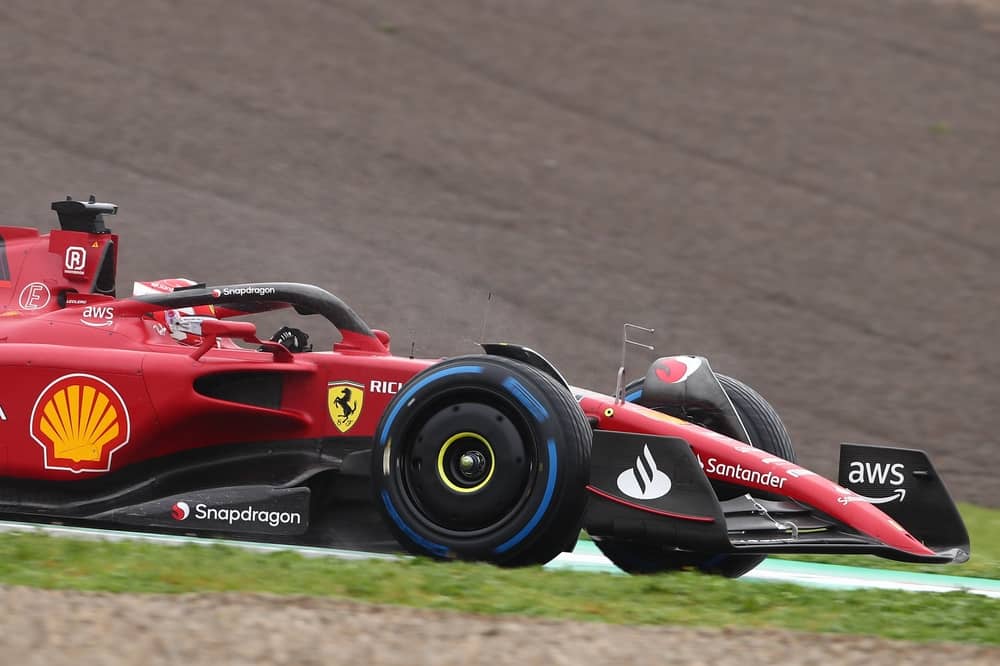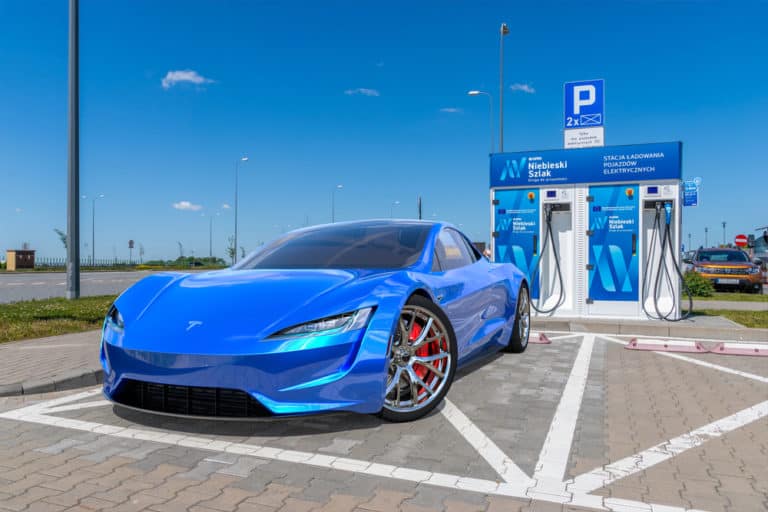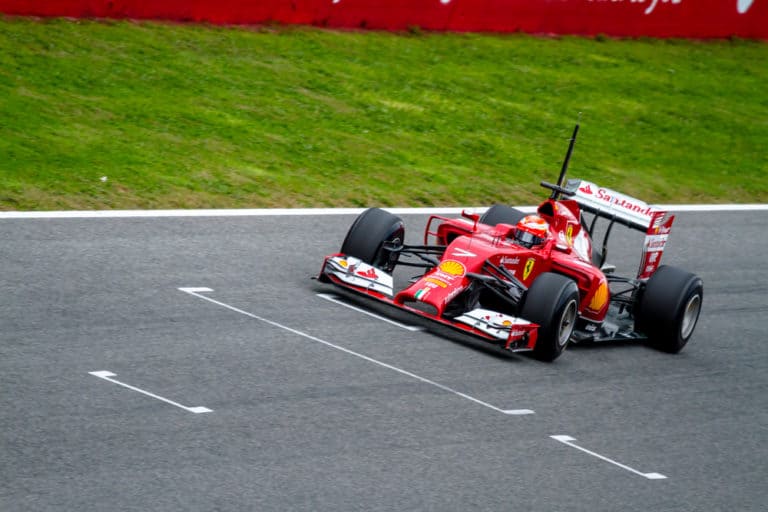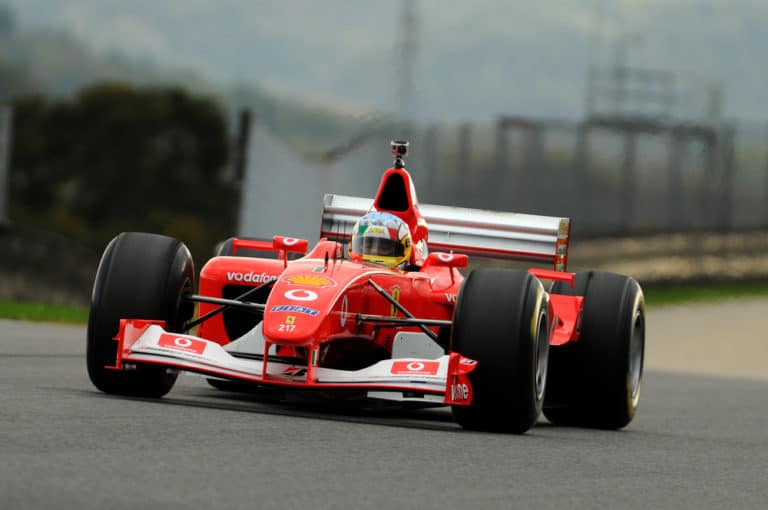Editorial credit: Cineberg / Shutterstock.com
Since Formula E’s first season in 2014, many enthusiasts have taken to the new category, moving away from Formula 1. Both categories are the pinnacle of innovation, although they differ. However, which is faster?
Formula 1 cars are much faster than Formula E cars. An F1 car reaches a top speed of 350 kph and accelerates from 0-100 kph in 2.6 seconds, while a Formula E car reaches a top speed of 280 kph and accelerates from 0-100 in 2.8 seconds.
Formula 1 is a category that has been established as the pinnacle of motorsport for many decades, while Formula E is not even a decade old. Both series produce spectacular racing and create huge innovations every year. Let’s compare the two in more detail.
How Fast Are Formula E Cars?
Formula E cars have an all-electric motor with 250kW of power and 54 kWh of battery, equivalent to 335 hp, with which they can reach a top speed of 280 kph (174 mph). They can also accelerate from 0-100 kph (0-60 mph) in just 2.8 seconds, as the electric motor delivers instantaneous power.
Because of this, Formula E cars produce a rather high-pitched, vacuum cleaner-like sound. Regarding aerodynamics, the Formula E cars all have the same chassis provided by Spark Racing Technology. Therefore, there is a lot of equality between teams, and there are not as significant differences as in Formula 1.
The aerodynamics of a Formula E car are really simple, generating their downforce through the huge rear diffuser, so they don’t have such large and complex front and rear wings as Formula 1 cars.
How Fast Are Formula 1 Cars?
Since the 2014 season, Formula 1 cars have been using a 1.6-liter four-stroke V6 turbo hybrid engine. These engines generate about 1000 hp of power, enabling a top speed of 350 kph (217 mph) and acceleration from 0-100 kph (0-60 mph) in 2.6 seconds.
Thus, a Formula 1 power unit consists of an Internal Combustion Engine (ICE), a Turbo Charger, MGU-K, MGU-H, Control Electronics, and Power Store.
Likewise, aerodynamics is critical in Formula 1. Within the limits of the FIA, each team develops its own chassis, with complex front and rear wings, displays, endplates, and sidepods that generate high downforce and which can make a big difference between teams.
Is Formula E Or Formula 1 Faster?
As you may have deduced from the above, Formula 1 cars are much faster than Formula E cars. Formula 1 cars are virtually unrivaled in terms of lap times, holding all the time lap records on the circuits they race on.
The only circuit where Formula E and Formula 1 race is Monaco, although they run in different versions. However, the third sector of the Principality circuit is identical for both series, so it is the only area where we can really compare a Formula E car and a Formula 1 car.
In the third sector of Monaco, Formula 1 cars are 10 seconds faster than Formula E cars due to the top speed that an F1 car can reach and its aerodynamics, brakes, and lighter weight. No car can come close to the speed at which Formula 1 cars corner and brake.
Comparison: Formula E car vs. Formula 1 Car
Below is a table in which we sum up the characteristics of Formula E and Formula 1 cars to see the differences more clearly.
| Formula E | Formula 1 | |
|---|---|---|
| Chassis | Complex aerodynamics. All teams have their own chassis | Simplified and unified aerodynamics for all teams |
| Power Unit | 54 kWh Battery | 1.6-liter turbocharged hybrid V6 |
| Weight | 903 kg | 798 kg |
| Length | 5.16 meters | 5.5 meters |
| Width | 1.77 meters | 2 meters |
| Max. Power | 335 hp / 250 kW | 1000 hp / 745 kW |
| Top Speed | 280 kph / 174 mph | 350 kph / 217 mph |
| 0-100 kph (0-60 mph) | 2.8 seconds | 2.6 seconds |
| Noise Levels | 80 dB | 134 dB |
Will Formula E Ever Be Faster Than Formula 1?
At present, Formula E cars are nowhere near Formula 1 cars. However, will they ever be faster than F1? There is no reason to think that Formula E will be faster than Formula 1 for a long time to come, as the difference between the two series today is abysmal.
Formula 1 has continued to develop and innovate for over 70 years, building a huge fan base worldwide and bringing in gigantic amounts of money. While Formula 1 teams have a budget cap of €145 million per year, the Formula E teams’ budget is around €12 million per season.
However, Formula E has an excellent projection for the future. In just 8 years, they have grown worldwide and have significantly improved the cars in all aspects, bringing out two generations of cars, Gen1 and Gen2, with the third generation ready for the 2023 season.
During the early seasons, the car batteries did not last the full races, requiring teams to have a spare car to complete them, something they can now do. Also, the power increased by 50kW from Gen1 to Gen2 and the top speed by 50kph. For Gen3, the top speed is expected to increase from 280kph to 320kph while producing the equivalent of more than 800 hp, a marked improvement.
Therefore, it will be interesting to see the evolution of Formula E over the next few years, as it has significant room for improvement, and the category is going in the right direction, innovating every year. Despite this, it is tough to match the performance of F1 cars in the short term.

Conclusion
Formula 1 cars are much faster than Formula E cars due to their powerful and efficient 1.6-liter V6 turbocharged hybrid engines compared to Formula E electric motors.
Likewise, Formula 1 has been innovating and improving for the past 70 years, while Formula E, only 8 years old, is still in the early stages of development. Therefore, we can expect significant improvements in the performance of Formula E cars in the coming years.
References
- https://flowracers.com/blog/will-formula-e-ever-be-faster-than-formula-1/
- https://www.caranddriver.com/news/a39861521/formula-e-gen3-revealed/
- https://corporate.enelx.com/en/question-and-answers/Formula-E-vs-Formula-1
- https://www.youtube.com/watch?v=scXpk6VcyOs
- https://www.silverstonemuseum.co.uk/about-us/our-organisation/blog/formula-1-vs-formula-e-which-is-faster/
- https://www.fiaformulae.com/en/news/2020/september/world-ev-day-progress






